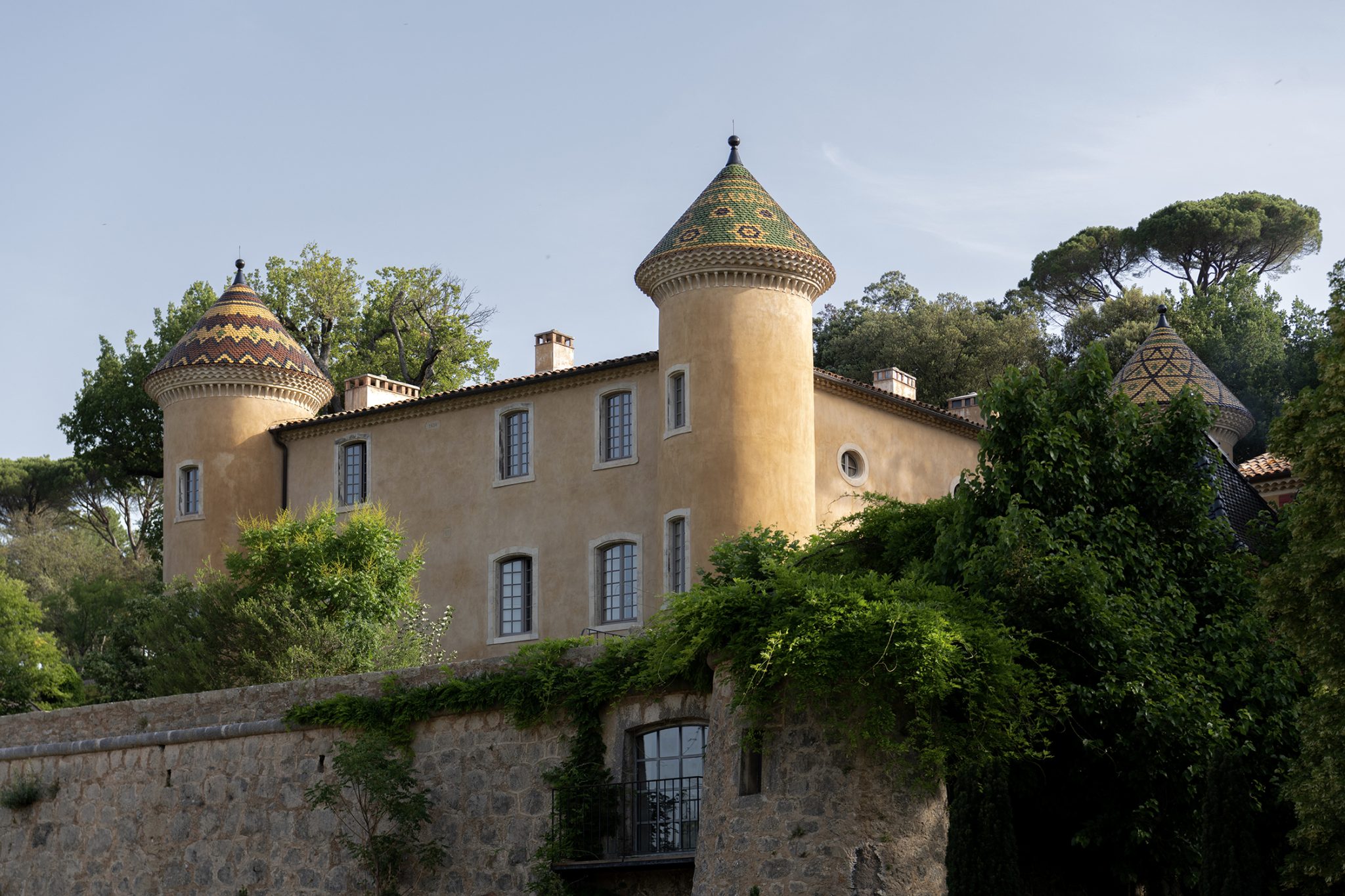
Pierre Yovanovitch
Craftsmanship and contemporary art transform an historic estate
In 2009, French designer and interior architect Pierre Yovanovitch purchased Château Fabrègues, an historic estate in Provence, set in a secluded region in the southern region of the Alps. Through meticulous renovations and restorations, the Paris-based designer has brought the formerly run-down property into a resplendent expression of his creative talent and an example of his love of craftsmanship, working with specialized artisans and bringing this savoir-faire into his projects.
Yovanovitch, who has worked on everything from opera sets to private villas as well as his bespoke line of furniture, has described Château Fabrègues as ‘the complete expression’ of his taste; one could also easily describe it as a total work of art. From the perfectly pink lime and whitewashed exterior and coloured tiles on the four turrets to the ‘gypseries’, intricately carved and painted ceilings, and site-specific artworks, the chateau is a passion project in which time and patience are an important part of the process. He notes, “It is a place where time flows differently as there are no deadlines other than my impatience, I can dream about a change or addition for a long time before going into action”.
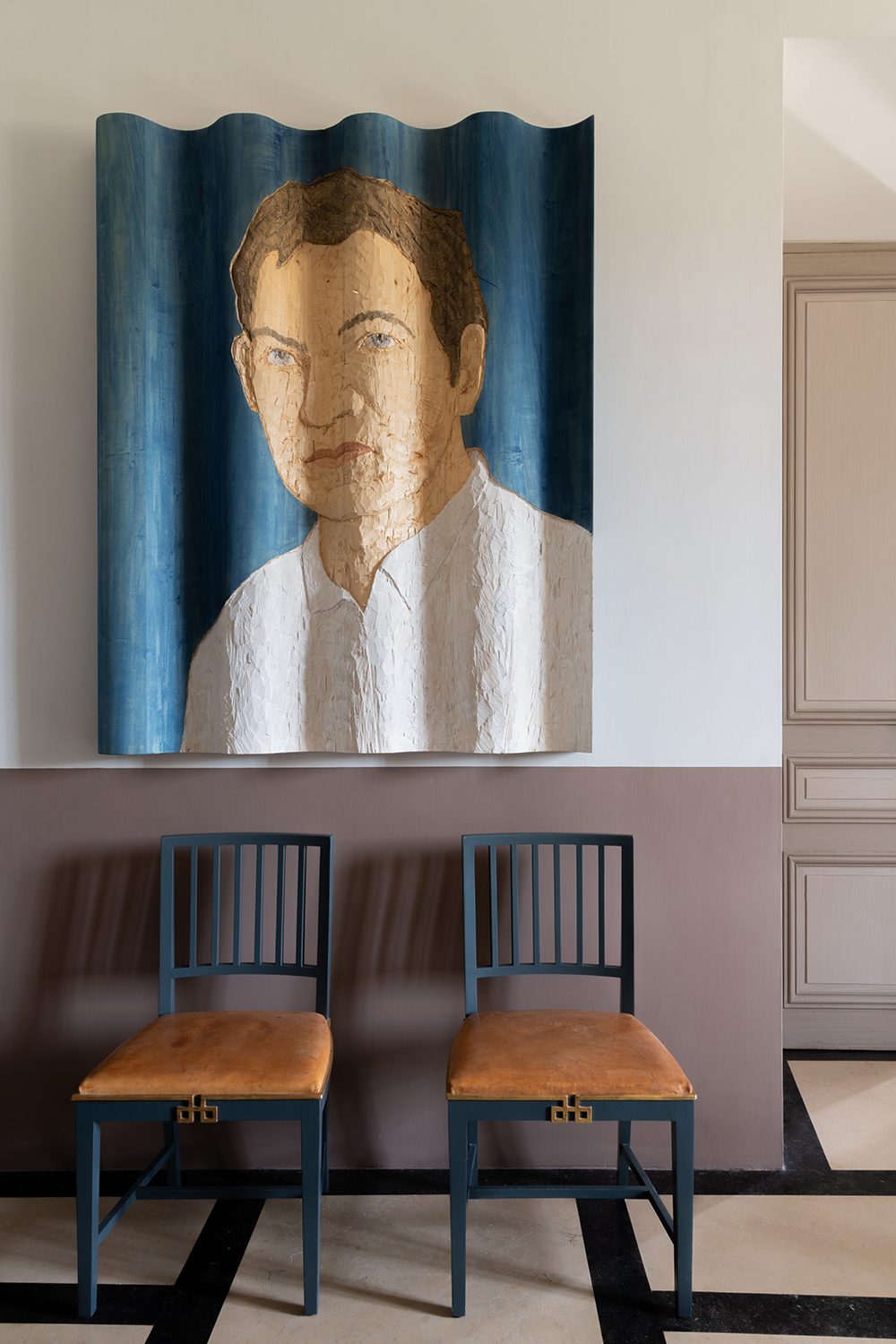
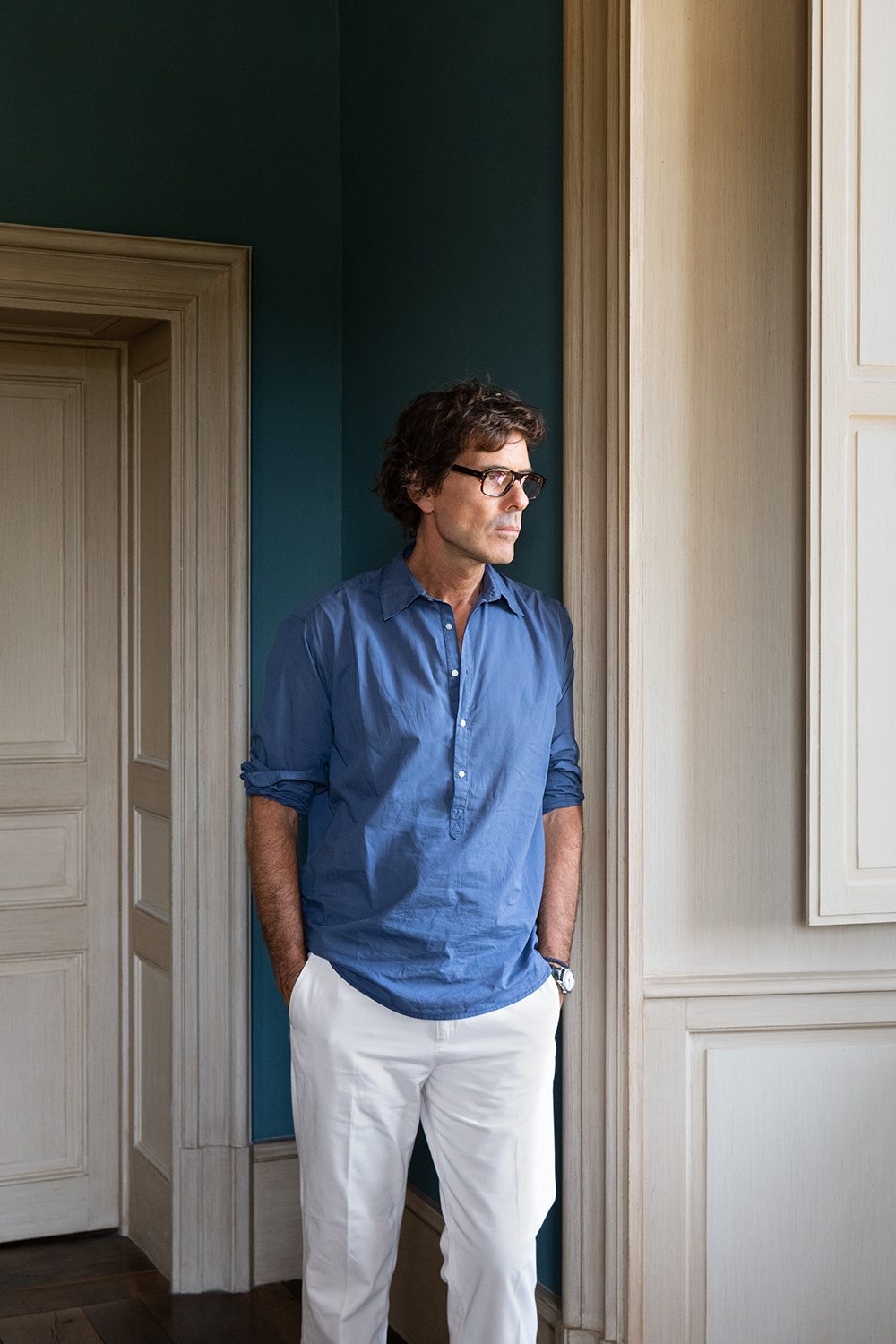
Tell us about your passion for bringing historic homes into contemporary times. What excites you about this process and do you feel that it is important in terms of preserving local heritage as well as for using what we have rather than just building new?
The main reason is beauty. Preservation of the past and the environment surely come into play, but I must admit that they come second. Historic homes often possess a natural beauty which I believe does not stem just from the human tendency to idealize the past. They were built under a different set of rules, more space was available, only a limited set of natural materials could be used, and techniques were practiced a long time, almost to perfection as they seldom changed.
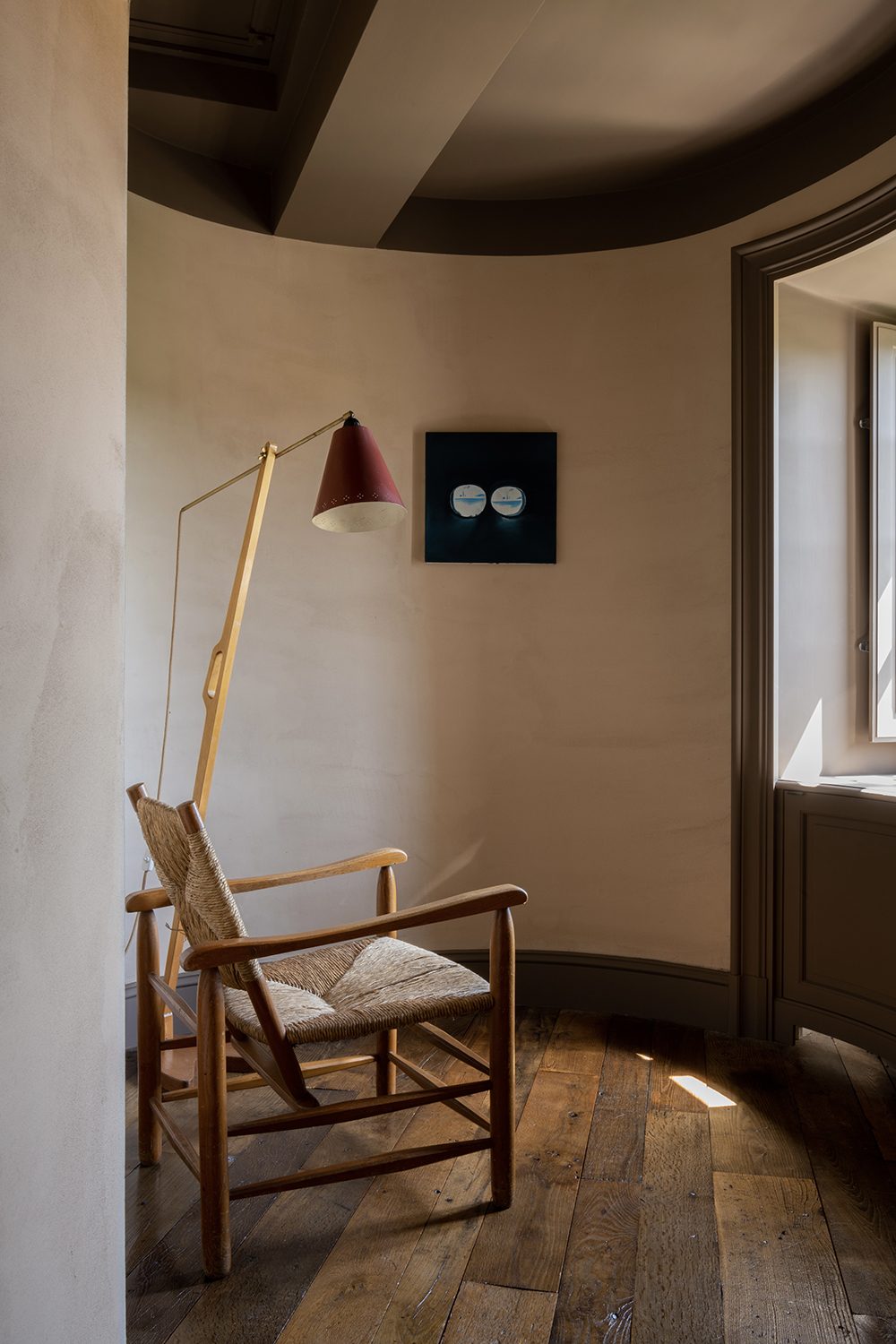
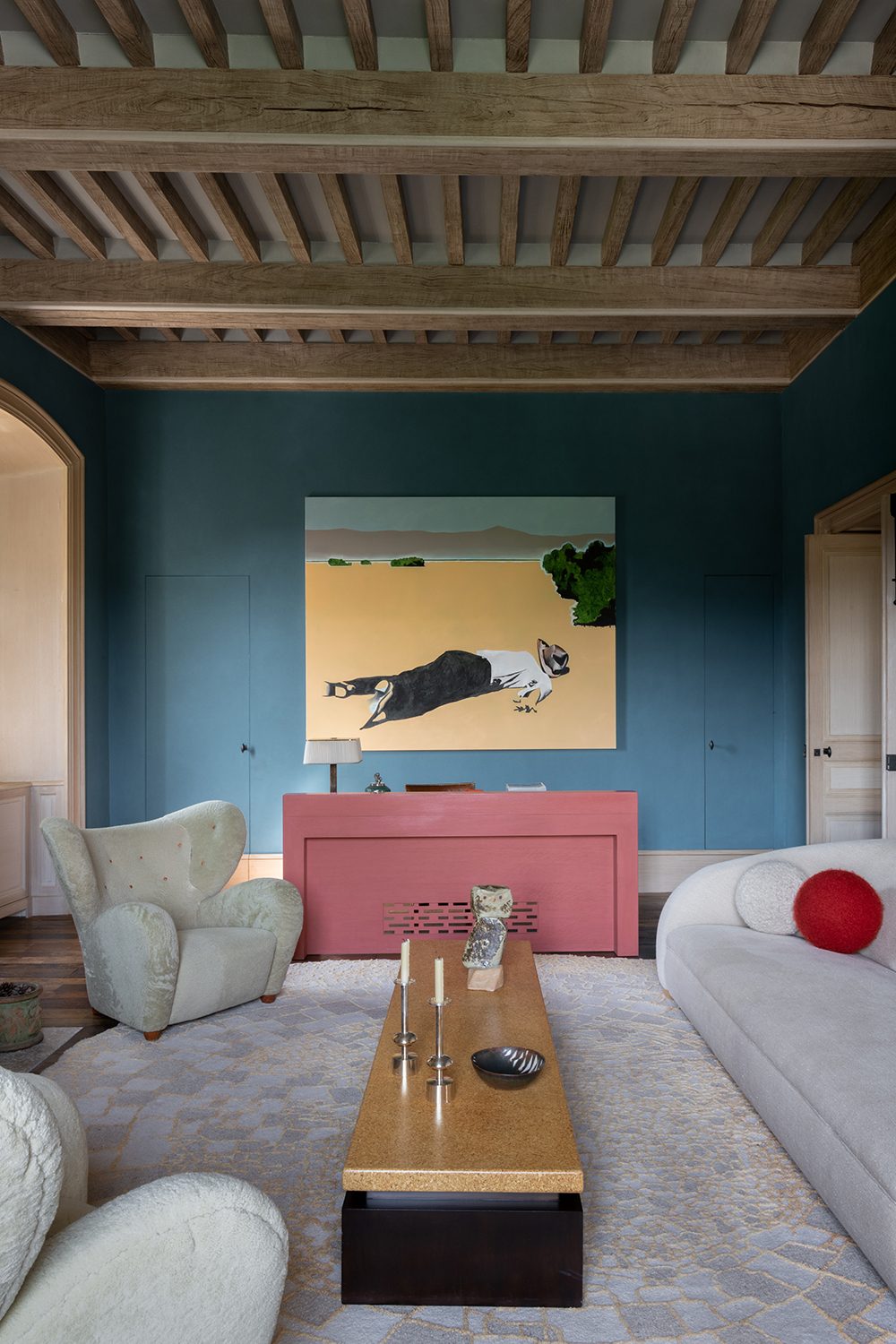
What was, or is, the most challenging part of restoring Château de Fabrègues?
Believe it or not, the most challenging part is agriculture. Fabrègues is an “art de vivre”, as such it includes the relationship with nature and of course agriculture. When we bought the estate, all its traditional agricultural grounds were abandoned. We knew nothing and had to start from scratch. Recreating the agricultural cycle requires patience and a trial-and-error approach particularly in the difficult climate of Fabrègues (cold winters, harsh springs, hot and dry summer) in a time of climate change. We have been at it for 10 years already and it will take at least another 10 before we have something that runs to my satisfaction.



